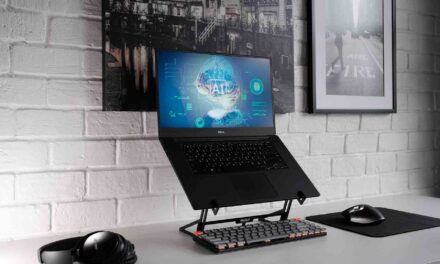With an uptick in support queries across various communication platforms, the lack of integration of communication services is a huge gap among many organisations in the region, says Savinay Berry, Executive Vice President, Product and Engineering, Vonage, in this exclusive interview with MartechAsia.
Vonage, a global business cloud communications company, recently acquired technology and intellectual property assets from Jumper.ai, a Singapore-based leader in omnichannel conversational commerce solutions.
With this acquisition, Vonage gains significant technology and developer-focused talent, as well as expertise in conversational commerce, complementing the programmable, flexible and intelligent capabilities of its singular Vonage Communications Platform and robust portfolio of application programming interfaces (APIs). The Jumper.ai platform creates omnichannel, messaging-first customer engagement and shopping journeys across social, messaging, and web (WhatsApp, Messenger, Apple Business Chat, Instagram, Twitter, SMS, LINE, Google Ads, brand websites, and more).
Against this background, conducted an interview with Savinay Berry, Executive Vice President, Product and Engineering, Vonage, to learn more about the rise of conversational commerce and how Vonage helps customers in the region.
What is conversational commerce? How is it different from live commerce or shoppertainment?

Conversational commerce is an in-demand retail trend that capitalises on the growing convergence of shopping and conversations on platforms such as Facebook Messenger, WhatsApp and Instagram, using the chat feature to create a seamless shopping experience. Consumers can engage in personal conversations to inquire about product and pricing information and build trusted relationships with retailers. This involves a two-way communication via messaging/texting and does not involve live video streaming.
On the other hand, live commerce combines live video streaming to the online shopping experience. Ecommerce platforms can live stream their events during which the audience can directly ask questions and communicate with the presenter during the live session.
What are the major trends in APAC in terms of conversational commerce? Are businesses leveraging it to their advantage in the region?
According to a conversational commerce forecast by Juniper Research, the total global addressable market in this space will be worth $27 billion by 2025, rising from less than $10 million in 2021.
Regionally too, conversational commerce is booming. Southeast Asia has surpassed countries such as the US, Mexico, India, and Brazil in both awareness and adoption of conversational commerce. According to a study by Facebook and Boston Consulting Group, Thailand (40%) and Vietnam (36%) had the highest number of respondents who had undertaken a conversational commerce transaction, followed by Indonesia (29%), Malaysia (26%) and the Philippines (23%).
Customer expectations and their need to communicate with brands have certainly increased. According to Facebook, 48% of holiday shoppers are more likely to buy if businesses are contactable through instant messaging.
Overall, businesses are leveraging conversational commerce to understand the needs and expectations of customers better, offer personalised experiences and gain a competitive advantage.
Why did Vonage acquire Jumper.ai? How does it benefit Vonage, its customers and partners?
The addition of Jumper.ai’s conversational commerce and omnichannel capabilities fits perfectly into Vonage’s strategy and is a natural extension of Vonage’s offerings. The Jumper.ai platform creates omnichannel, messaging-first customer engagement and shopping journeys across social, messaging, and web (WhatsApp, Messenger, Apple Business Chat, Instagram, Twitter, SMS, LINE, Google Ads, Brand websites, and more). It is an all-in-one solution that meets the needs of major brands to connect with consumers through web and social channels, while also turning these conversations into richer AI-enabled customer experiences with rapid service and sales follow-through.
With the acquisition of Jumper.ai, Vonage is gaining relevant technology to address this growing need, as well as existing enterprise customers across key industries that are driving the growth of conversational commerce, including leaders in the consumer brands, food, retail, entertainment, hospitality and travel industries, such as L’oreal, Kiehl’s, Disney, Axe, Dove, Ben & Jerry’s and Burger King.
The way many consumers engage with brands is fast becoming identical to how they talk to their friends—through messaging apps and social media. Being able to provide a means for consumers to better interact with the brands they do business with, on top of the existing API and Contact Center Solutions that Vonage provides, will provide end to end customer engagement solutions powered by our pre-built applications as well as our customizable API. This breadth of offerings is not found in competitive solutions today.
Tell us about your business in APAC? Was it affected by the pandemic and did the pandemic force or inspire the company to innovate?
We have witnessed a secular change in the way that business gets done, with success driven by digital experiences and the ability to serve employees and customers remotely. Businesses in APAC, and all over the world, have had to adapt to meet these customer expectations and provide the experience customers demand in order to not only survive but thrive.
The Vonage Communications Platform is uniquely positioned to offer organisations a wide range of scalable and flexible communications services and solutions including APIs, unified communications, and contact center applications that enable remote work and remote delivery of services, while making doing business easier and more cost effective. Cloud communications powered by the VCP can support hybrid and remote work environments across verticals – from education to telehealth and insurance, financial services to entertainment, and more.
With social distancing and safety measures in place around the globe, the education industry had to adjust overnight to a new, virtual, reality. This led English language education company Wall Street English to launch a digital classroom platform to give students continued access to their courses and teachers the ability to conduct classes online. The Vonage Video API, embedded within Wall Street English’s platform, enables students and teachers to have live, engaging and interactive video classes, creating an environment similar to an in-person classroom experience. Students can even interact with their teacher and fellow students like they would in a traditional classroom.
How is Vonage helping its customers like Carousell, PT. Telekomunikasi, PUBG Corporation and Kakao in the region?
Vonage’s Communications Platform is fully programmable and allows for the integration of Video, Voice, Chat, Messaging and Verification into existing products, workflows and systems. Our fully programmable unified communications and contact center applications are built from the Vonage platform and enable companies to transform how they communicate and operate from the office or anywhere, providing enormous flexibility and ensuring business continuity.
For instance, Carousell and PUBG Corporation are using Vonage’s Verify API to implement two-factor authentication (2FA) to validate accounts.
Meanwhile, PT. Telekomunikasi has implemented the Vonage Messages API to engage with millions of customers more effectively through Indonesians’ preferred channels – WhatsApp and SMS.
Kakao Corp is using Vonage’s Number Insight Advanced API to verify phone numbers and authenticate new users of KakaoTalk, South Korea’s leading instant messaging mobile application, before sending them a verification PIN code via SMS to enable registration.
Are cloud communications solutions driving the digital economy in APAC? What is the level of impact?
Digitalisation has become imperative to stay connected to employees and customers online, across devices and channels – video, messaging, chat or voice.
According to Synergy Research Group, cloud-based communications and software technologies have become increasingly popular due to the pandemic. Global communications platform-as-a-service (CPaaS) is on track to exceed US$5 billion by end 2021. The APAC region enjoyed the fastest year-on-year growth around the world, exceeding 55%, well above the global average of 40%. The report also names global cloud communications leader Vonage, the number one CPaaS vendor in APAC.
A new global study conducted by Forrester Consulting, commissioned by Vonage, shows that companies who choose an advanced CPaaS platform over complex, individual APIs are vastly more capable of improving customer experience and increasing revenue. In fact, companies working with an advanced platform provider like Vonage are significantly more effective at getting customers the information they want (98%) than non-CPaaS users (37%).
In terms of CX and CX tech adoption, what gaps do you see in APAC and what’s your advice to CMOs?
Customer expectations have changed drastically due to COVID-19. Customers now choose where and how often they want to engage with their service providers.
According to an Infobip research, carried out across Singapore, Malaysia, Indonesia, Taiwan, South Korea, China, Thailand, Vietnam, and the Philippines, 54% of respondents cited an increase in support enquiries as a top challenge faced by the customer support team.
With an uptick in support queries across various communication platforms (call, text, email, social media, etc.), the lack of integration of communication services is a huge gap among many organisations. Businesses need to implement a multichannel customer engagement strategy, enabling their customers to reach out through a channel of their choice for instant, convenient communications. This will help them effectively manage the variables of every customer interaction while maintaining the context of the conversation across all channels.
Another gap is the lack of understanding of the changing customer expectations during COVID-19. With the right digital tools and communication platforms, businesses can get insights and analytics into their customer’s preferences and adapt to it accordingly.



















